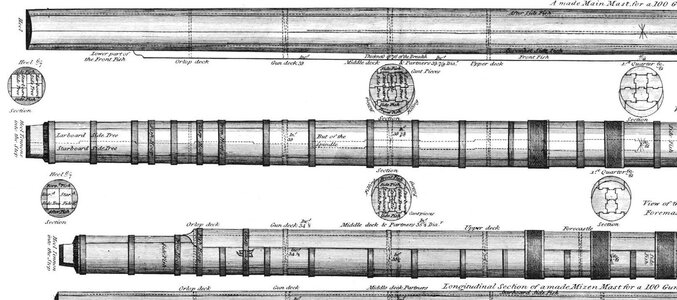Definitely the french had also the needs to construct the mast with different timbers. they did not have bigger or thicker treesI do have Longridge's Anatomy of Nelson's Ships, and it has an excellent detail of the main mast, with sections and details along every part of it. But I didn't know if it would apply to a smaller, French ship.
I am not aware, if they had maybe different ways of connecting the elements, so if the cross section was different.
I know, that over the time and better knowledge and experience, the elements of masts changed......
Definietly it is a nice add on and an interesting detail of a model







